Breast Augmentation in Higashicho
Search and Compare the Best Clinics and Doctors at the Lowest Prices for Breast Augmentation in Higashicho
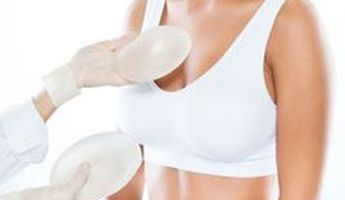
Find the best clinics for Breast Augmentation in Higashicho
With Medijump you can browse 1 facilities offering Breast Augmentation procedures in Higashicho. The cheapest price available is $5,323 in Higashicho. And for the cheapest price globally, prices start from $208 in Hungary.
Breast Augmentation in Japan
Price: $ 5,323
Breast Augmentation in Higashicho
Price: $ 5,323
Hungary offers the best prices Worldwide
Price: $ 208
Dr Kure Katsuhiro Robert, located in Central Higashicho, Higashicho, Japan offers patients Breast Augmentation procedures among its total of 6 available procedures, across 2 different specialties. The cost of a Breast Augmentation procedure starts from £4,177, whilst the national average price is approximately £4,177. All procedures and treatments are undertaken by the lead specialist at the Hospital, and they are accredited by ASPS - American Society of Plastic Surgeons
Compare Before & After Photos of _procedure_photos.phpBreast Augmentation
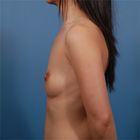
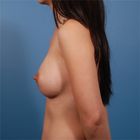
Full-side view
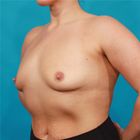
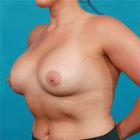
Half-side view
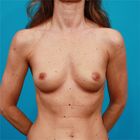
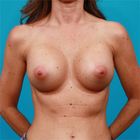
Front view
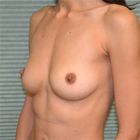

Half-side view

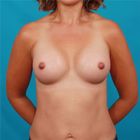
Front view
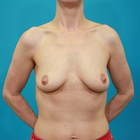
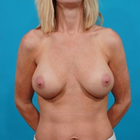
Front view
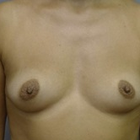

Front view

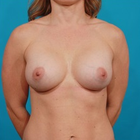
Front view
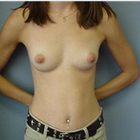
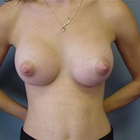
Front view
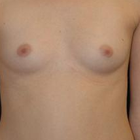
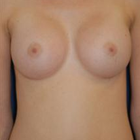
Front view
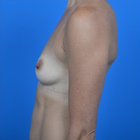

Full-side view
WHY US?
At Medijump, we're making medical easy. You can search, compare, discuss, and book your medical all in one place. We open the door to the best medical providers worldwide, saving you time and energy along the way, and it's all for FREE, no hidden fees, and no price markups guaranteed. So what are you waiting for?

Free

Best Price

Widest Selection

Risk-Free
What you need to know about Breast Augmentation in Higashicho

Breast augmentation, also known as a Boob Job or Breast Enlargement, is a surgical procedure aimed at increasing breast size, enhancing shape, or improving symmetry. In Higashicho, this procedure is carried out by board-certified plastic surgeons in accredited medical facilities, ensuring both safety and quality.
What is the cost of Breast Augmentation in Higashicho?
Prices in Higashicho are competitive, often offering savings without compromising on quality, especially when compared to costs in the US or Europe. However, factors such as surgeon’s fees, facility costs, and the type of implants affect the total cost.
What does a Breast Augmentation Procedure Involve?
The surgery involves placing breast implants under the breast tissue or chest muscles. Choices between saline or silicone implants can be made based on the desired feel and appearance. This is something your surgeon will discuss with you prior to even travelling.
How Long Should I Stay in Higashicho for a Breast Augmentation Procedure?
The length of stay in Higashicho for a Breast Augmentation is subject to various factors, such as your overall health, the specific nature of the procedure, and your individual recovery rate. Generally, Breast Augmentation surgery is an outpatient process, meaning you may be able to return home on the same day. However, a stay of up to two days might be necessary if your procedure is more intricate.
Although the hospital stay is relatively brief, it is advisable to remain in Higashicho for at least one-week post-procedure. This timeframe allows for initial recovery and a follow-up appointment with the surgeon. Moreover, in the event of any complications, prompt medical assistance will be accessible. Thorough knowledge of the recovery process and its duration is crucial for proper preparation and managing stress during treatment.
What's the Recovery Time for Breast Augmentation Procedures in Higashicho?
Post-surgery, a recovery period of one to two weeks is generally required, with follow-up visits to the surgeon. It's crucial to follow all post-op instructions for optimal healing.
Experiencing swelling and discomfort following the operation is normal, both of which should gradually alleviate with time. You will be required to wear a compression garment, take prescribed medications, and maintain a healthy lifestyle for an effective recovery.
What sort of Aftercare is Required for Breast Augmentation Procedures in Higashicho?
Post-operative care is critical for the success of a Breast Augmentation. The initial recovery phase usually includes prescribed medications to alleviate pain and avert infection. Individuals can normally resume everyday activities within a few weeks, depending on their healing pace and bodily responses. However, it is advisable to refrain from vigorous activities for a minimum of six weeks post-procedure.
What's the Success Rate of Breast Augmentation Procedures in Higashicho?
In Higashicho, Breast Augmentation boasts a relatively high success rate, which contributes to its immense popularity among individuals seeking improvements in their physical appearance. Numerous patients have reported satisfaction and enhanced confidence after undergoing the procedure, making it a widely favoured cosmetic surgery.
Are there Alternatives to Breast Augmentation Procedures in Higashicho?
In Higashicho, there are several alternatives to the Breast Augmentation. If you're considering breast augmentation strictly for cosmetic reasons and prefer non-surgical options, various suitable methods are available. Alternatives include fat grafting, hormonal therapy, and natural remedies. Fat grafting, also known as fat transfer, involves removing fat from different body parts and injecting it into your breasts. This approach is regarded as safer because it employs the body's tissue, minimizing complications.
What Should You Expect Before and After the Procedure?
Prior to the procedure, your surgeon will discuss your expectations and the anticipated outcomes of your Breast Augmentation. The preoperative consultation comprises an in-depth conversation about your medical history, a physical examination, and an outline of the procedure and postoperative care. Open and candid communication with your healthcare provider is crucial at this stage to ensure the treatment matches your objectives.
Post-procedure, initial swelling and discomfort are normal and can be managed with prescribed medication. It's vital to adhere to your surgeon's post-operative guidelines, which include caring for surgical incisions, taking prescribed medications, and attending follow-up appointments. As swelling subsides and incision lines fade gradually, your enhanced breast profile will become apparent.
Keep in mind that the decision to pursue a Breast Augmentation is deeply personal and should not be made hastily. Allocate time to consider the advantages and drawbacks, and ensure you are well-informed.
What are the Risks and Complications of Breast Augmentation Procedures in Higashicho?
As is the case with any surgical intervention, Breast Augmentation comes with its own set of risks and potential complications that need to be considered. These may include infections, bleeding, alterations in nipple or breast sensations, implant leakage or rupture, development of scar tissue, and unsatisfactory outcomes that could necessitate further surgeries.
Some individuals may also encounter complications tied to anesthesia, such as respiratory problems and reactions to medication. The psychological ramifications should not be overlooked, considering surgical procedures can impact mental well-being. An extensive conversation with your healthcare provider about these potential risks remains a key component in making an informed choice.
How to Prepare for Breast Augmentation in Higashicho?
Thorough preparation plays a significant role in the success of your Breast Augmentation. Before the surgery, you must have detailed conversations with your surgeon about your medical background, allergies, current medications, and lifestyle habits such as smoking or alcohol consumption. You may need to cease certain medications and habits, including smoking, weeks before the procedure, as they can influence the healing process.
Practical preparations like organizing for someone to be with you on the day of the surgery, scheduling sufficient time off work for recovery, and establishing a comfortable space at home for recuperation can contribute to a smoother post-operative phase. Your surgeon's team will also advise you on pre-operative fasting and hygiene guidelines.
What are some Common Misconceptions about Breast Augmentation?
Despite its widespread popularity, numerous misconceptions surround the Breast Augmentation. One such misconception asserts that breast implants are permanent. In actuality, breast implants may require replacement after 10-15 years, with the specific timeframe depending on individual health and lifestyle factors. Another false assumption is that breast augmentation solely serves vanity purposes. In reality, many patients undergo this procedure following mastectomy or as part of gender-affirming surgery.
A further common myth suggests that breast augmentation hinders breastfeeding. While a few instances might affect breastfeeding, the majority of individuals with breast implants can successfully breastfeed.
Whilst the information presented here has been accurately sourced and verified by a medical professional for its accuracy, it is still advised to consult with your doctor before pursuing a medical treatment at one of the listed medical providers
No Time?
Tell us what you're looking for and we'll reachout to the top clinics all at once
Enquire Now

Popular Procedures in Higashicho
Prices Start From $834

Prices Start From $500

Prices Start From $93

Prices Start From $85

Prices Start From $477

Prices Start From $931

Recommended Medical Centers in Higashicho for Breast Augmentation

- Interpreter services
- Translation service
- Religious facilities
- Medical records transfer
- Medical travel insurance
- Health insurance coordination
- TV in the room
- Safe in the room
- Phone in the room
- Private rooms for patients available

- Interpreter services
- Translation service
- Religious facilities
- Medical records transfer
- Medical travel insurance
- Health insurance coordination
- TV in the room
- Safe in the room
- Phone in the room
- Private rooms for patients available

- Interpreter services
- Translation service
- Religious facilities
- Medical records transfer
- Medical travel insurance
- Health insurance coordination
- TV in the room
- Safe in the room
- Phone in the room
- Private rooms for patients available
Breast Augmentation in and around Higashicho
About Higashicho
Higashicho is an area in Koganei, a city located in the western part of Tokyo, Japan. Due to its ease of access to Tokyo and more affordable prices, Higashicho is frequented by tourists who wish to stay in a quiet and affordable accommodation than the ones in the center of Tokyo. Today, the area is also frequented by medical tourists looking for high-quality treatments in Japan. The clinics and hospitals in this area are known to have top quality services, reasonably priced treatments, state-of-the-art medical technology, as well as well-trained and licensed medical professionals.
Popular Parts of Higashicho
The most popular attraction near Higashicho is Koganei Park, which is a huge park with many different attractions. The park has free outdoor basketball courts, baseball fields, and tennis courts. It also has large open areas, perfect for those who want to go picnic or throw Frisbees. You can also find barbeque pits for rent. The park is also a good spot for plum blossom viewing in February and cherry blossom viewing in March. In fact, it is listed in the top 100 cherry blossom spots in Japan.
The park is also home to Edo-Tokyo Open Air Architectural Museum, a museum of historic Japanese buildings. This museum is a branch of the Edo-Tokyo Museum in Ryōgoku, Tokyo. The museum includes numerous buildings, from the middle-class ordinary Japanese houses to the homes of the powerful and wealthy, such as the residence of Takahashi Korekiyo, Japan’s former prime minister. In this museum, visitors can enter and explore various traditional Japanese buildings of different periods, styles, and purposes.
Transport in Higashicho
Since there is no international airport in Higashicho and Koganei, most international tourists arrive at the Narita International Airport. This airport serves domestic and international flights to numerous cities around the world.
Visas in Higashicho
Holders of passports issued by 66 countries, including all EU countries, Australia, the US, and the UAE, can visit and stay in Japan without a visa for up to 90 days. Most other countries not listed in the visa-free policy need to obtain a visa prior to arrival. Budget airlines, including Jetstar Japan, operates flights from this airport. Medical tourists can arrive in Koganei by train by taking the JR Chuo Line from Shinjuku west from thirty minutes, then take a taxi or bus to Higashicho.
Weather in Higashicho
Higashicho has four seasons. The summer (June to August) is hot and humid, with a lot of rainfall. Autumn (September to November) has mild weather with less humidity. November is the peak typhoon season. Winter (December to February) is dry, sunny, and cold, but the temperature rarely drops below 0°C. Spring (March to May) has pleasant weather and clear skies.
Additional Info
- Local Currency: Japanese Yen (JPY) is the local currency. 1 USD is approx. 106 JPY.
- Money & Payments: ATMs can be found around the area. Credit cards are not always accepted, so always bring cash with you. Tipping is not mandatory.
- Local Language: Japanese is the official language. English is not widely spoken, except in tourist areas.
- Local Culture and Religion: The main religion in the area is Shintoism and Buddhism. There is also a small group of Christian.
- Public Holidays: Emperor’s Birthday, Children’s Day, and Constitution Memorial Day are some of the public holidays celebrated in Higashicho.
Popular Searches
- Plastic Surgery in Thailand
- Dental Implants in Thailand
- Hair Transplant in Thailand
- Breast Augmentation Thailand
- Gastric Sleeve in Thailand
- Gender Reassignment Surgery in Thailand
- Laser Hair Removal in Bangkok
- Botox in Bangkok
- Dermatology in Bangkok
- Breast Augmentation in Bangkok
- Coolsculpting in Bangkok
- Veneers in Turkey
- Hair Transplant in Turkey
- Rhinoplasty in Turkey
- Stem Cell Therapy in Mexico
- Rhinoplasty in Mexico
- Liposuction in Mexico
- Coolsculpting in Tijuana
- Rhinoplasty in Korea
- Scar Removal in Korea
- Gastric Sleeve in Turkey
- Bone Marrow Transplant in India
- Invisalign in Malaysia
- Plastic Surgery in the Dominican Republic
- Tummy Tuck in the Dominican Republic
- Plastic and Cosmetic Surgery in Poland
- Rhinoplasty in Poland
- Hair Implant in Poland
- Dental Implants in Poland
- IVF in Turkey
